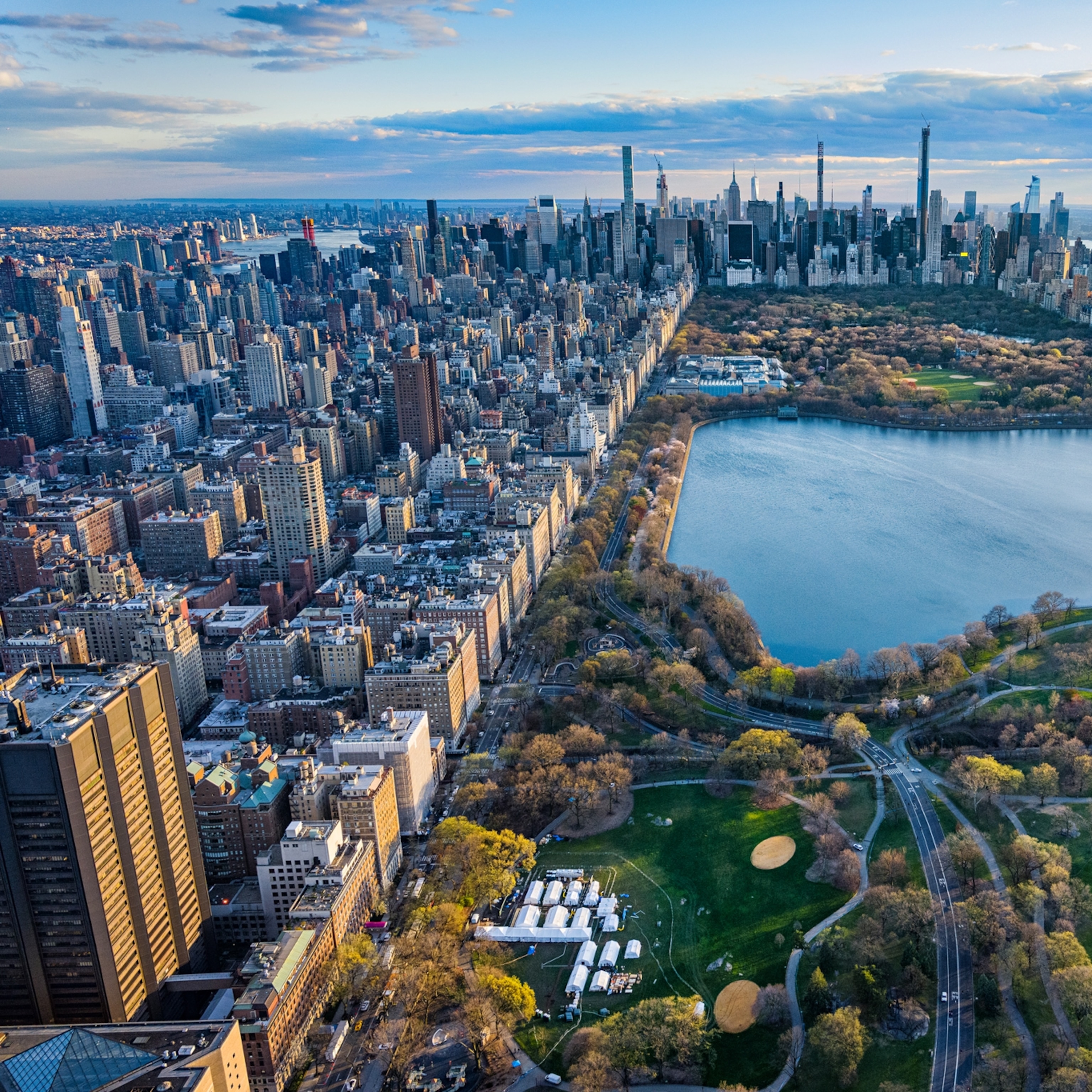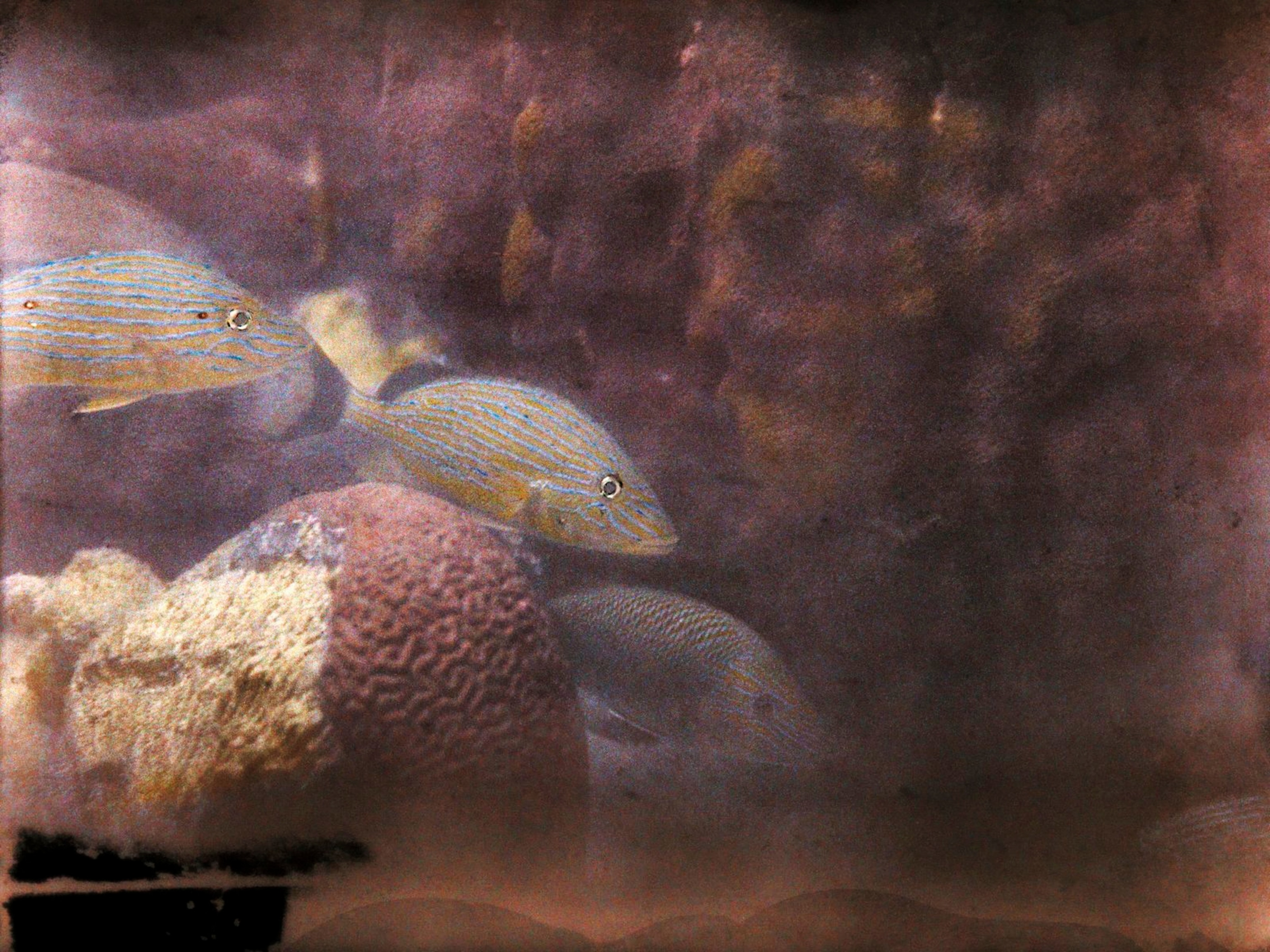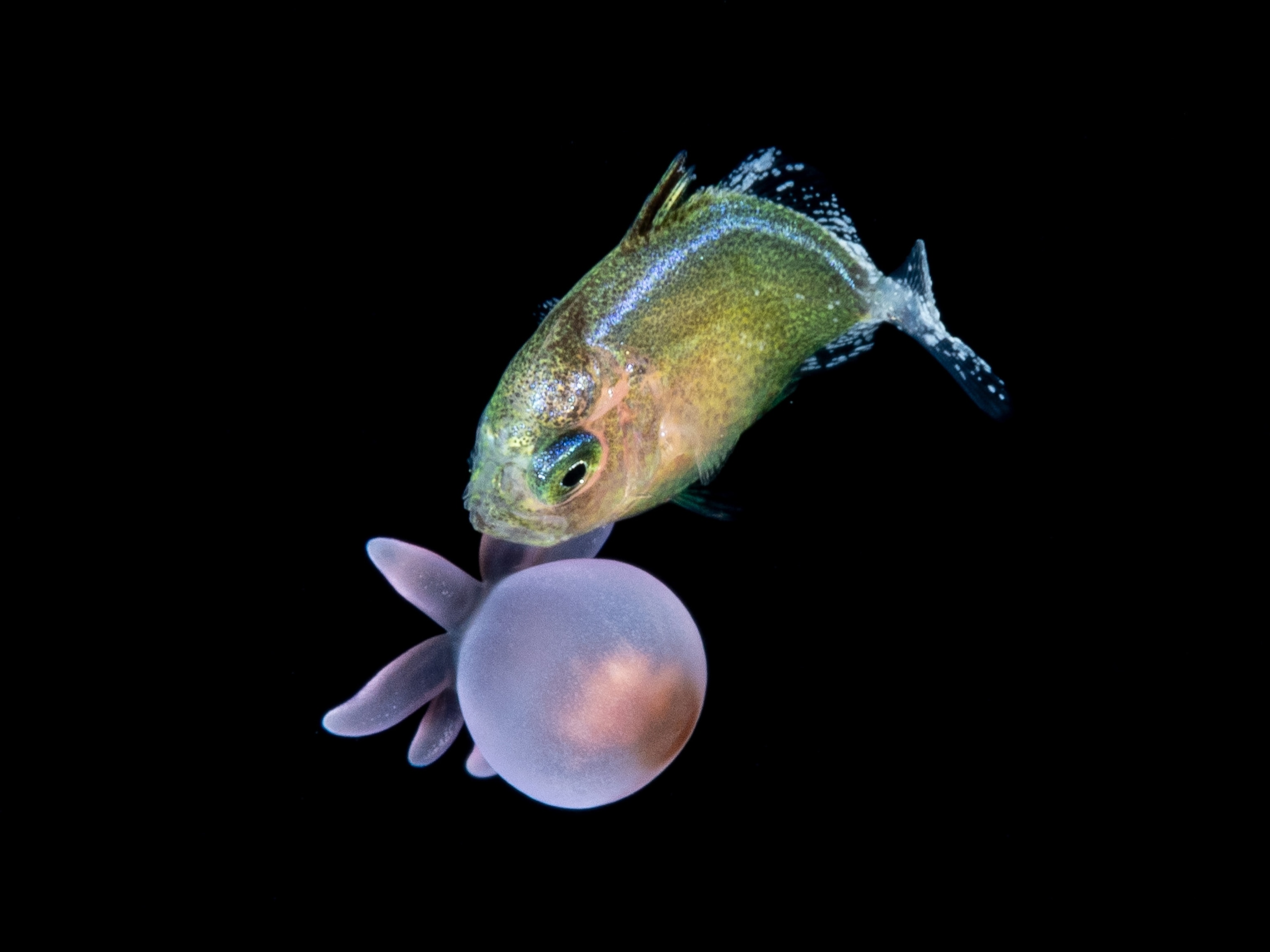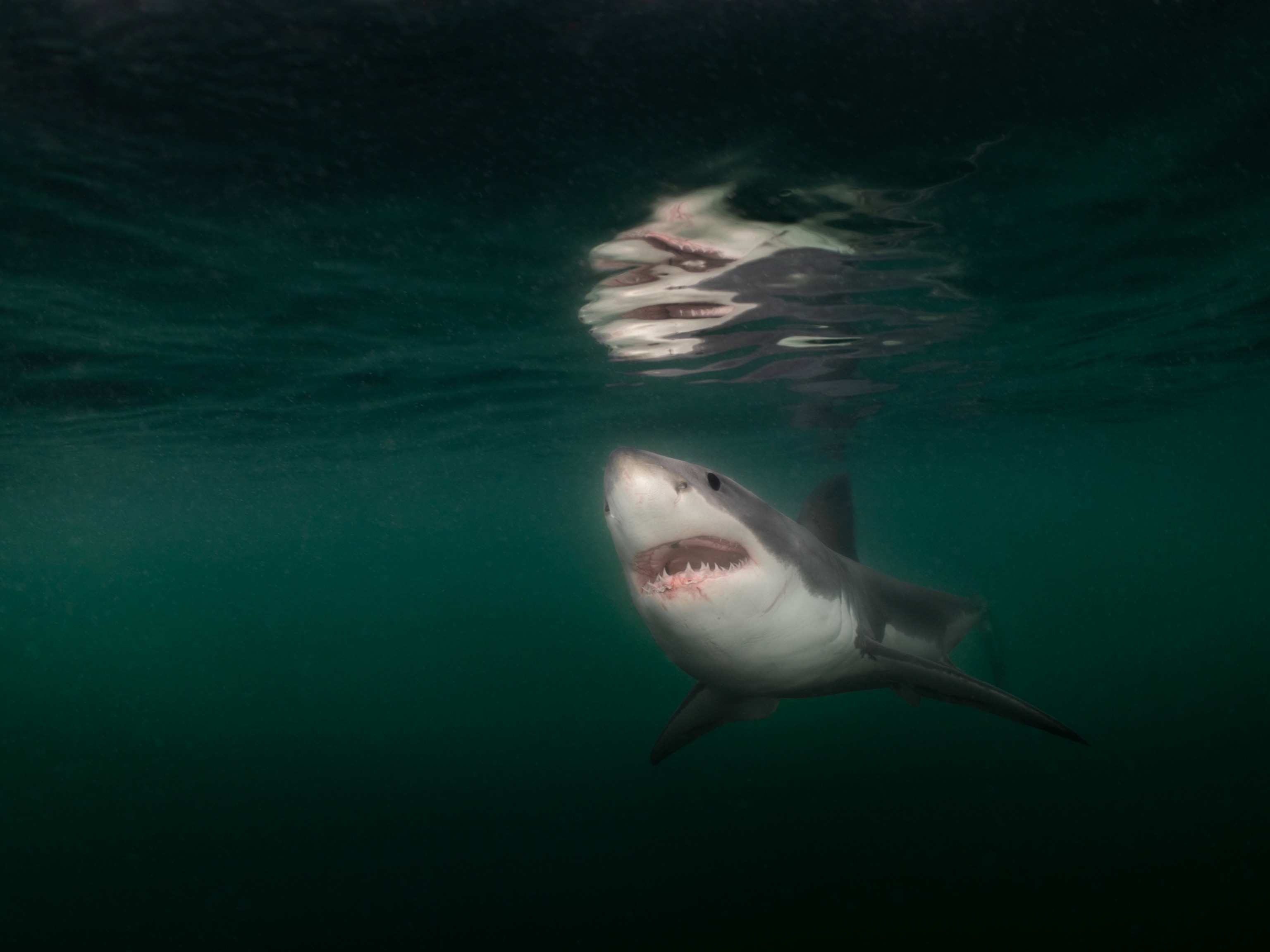
Nat Geo photographers take you behind the scenes of their favorite shots
To celebrate World Photography Day, our photographers discuss what it took to capture some of their world-famous pictures.
For National Geographic photographers, work assignments can take them anywhere from the sea floor to a summertime Santa Claus camp in Missouri.
In the photo seen above, wildlife photographer David Doubilet sets up a tripod while his partner, Jennifer Hayes, photographs him. Next to Doubilet, a curious grouper fish watches.
“It watched every move and picked up some of our equipment and carried it around, making us laugh,” says Hayes.
“The curious juvenile became obsessed with the clicks of the shutter and positioned itself directly in front of the lens without moving the entire time… There were hundreds of pictures of exactly the same thing—really close-up and out-of-focus [grouper] portraits as he eyed the camera intensely.”
From the whimsical to the tragic, we’re celebrating World Photography Day with a selection of images taken by our photographers while on assignment for National Geographic.
“[Our photographers] work tirelessly in the field for weeks, months, and sometimes even years, developing stories with technology built in-house by our engineering team,” says Dominique Hildebrand, the photo editor here at National Geographic who chose these photos.
“Each one of these images captures a moment that goes beyond a fraction of a second to convey a deeper narrative and evoke emotion—fostering connections between viewer, photographer, and subject,” says Hildebrand.
And each of these assignments presents its own unique set of challenges.
Reaching remote communities can be physically demanding. Wildlife—especially those feasting on a carcass—are difficult to approach. And people, seen here through portraiture, are complex, requiring a photographer who can take a humorous gathering seriously and see the individual humanity in a global tragedy.
Below, read the story behind each photograph, and head over to our official @NatGeo Instagram account to see more photos that have been selected to celebrate the art of photography.
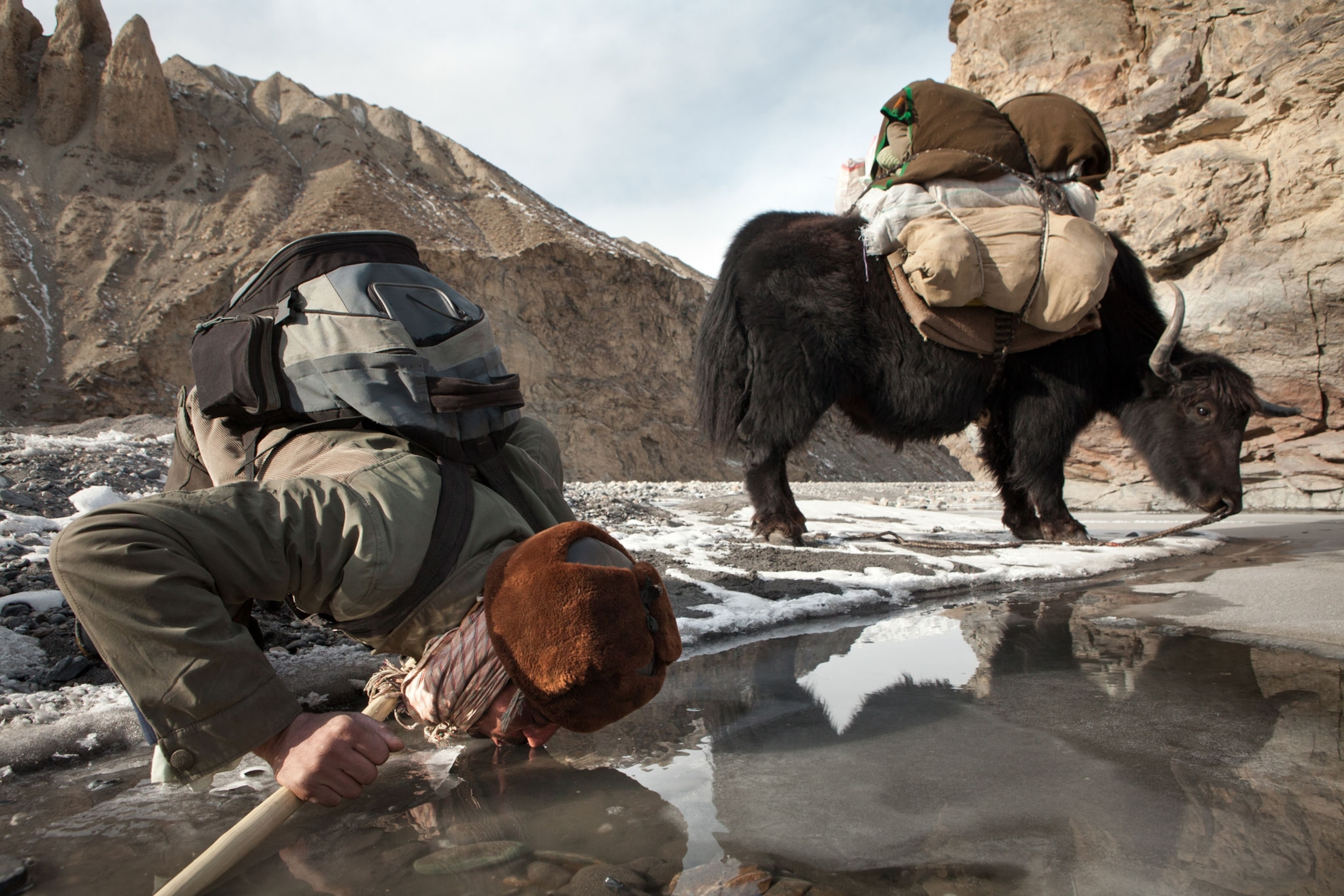
Matthieu Paley climbs to the 'roof of the world'
"Sometimes just getting there is the main part of my job as a photographer.
For my initial National Geographic magazine story in January 2012, I spent 40 days on assignment, with 28 days dedicated to the journey itself. The objective was to walk up the frozen Wakhan River in Afghanistan, a winter trek to the high-altitude Little Pamir plateau, 14,000 feet, to document the challenging life of the Afghan Kyrgyz community. Although I was familiar with this region from over a decade of intermittent work, winter in the Afghan Pamir was uncharted territory for me. The last outsiders to navigate the frozen river did so in 1972... I was excited yet apprehensive, to say the least.
Being a new father, with my son just having turned 11 months, brought added worries. What if the ice broke under my weight? Like most things scary in your mind, once you actually live through them, you understand them and they become your friends… These are images from my expedition days “commuting” to my first story for the magazine—extraordinary times spent on the edge of the story." —Matthieu Paley, @paleyphoto
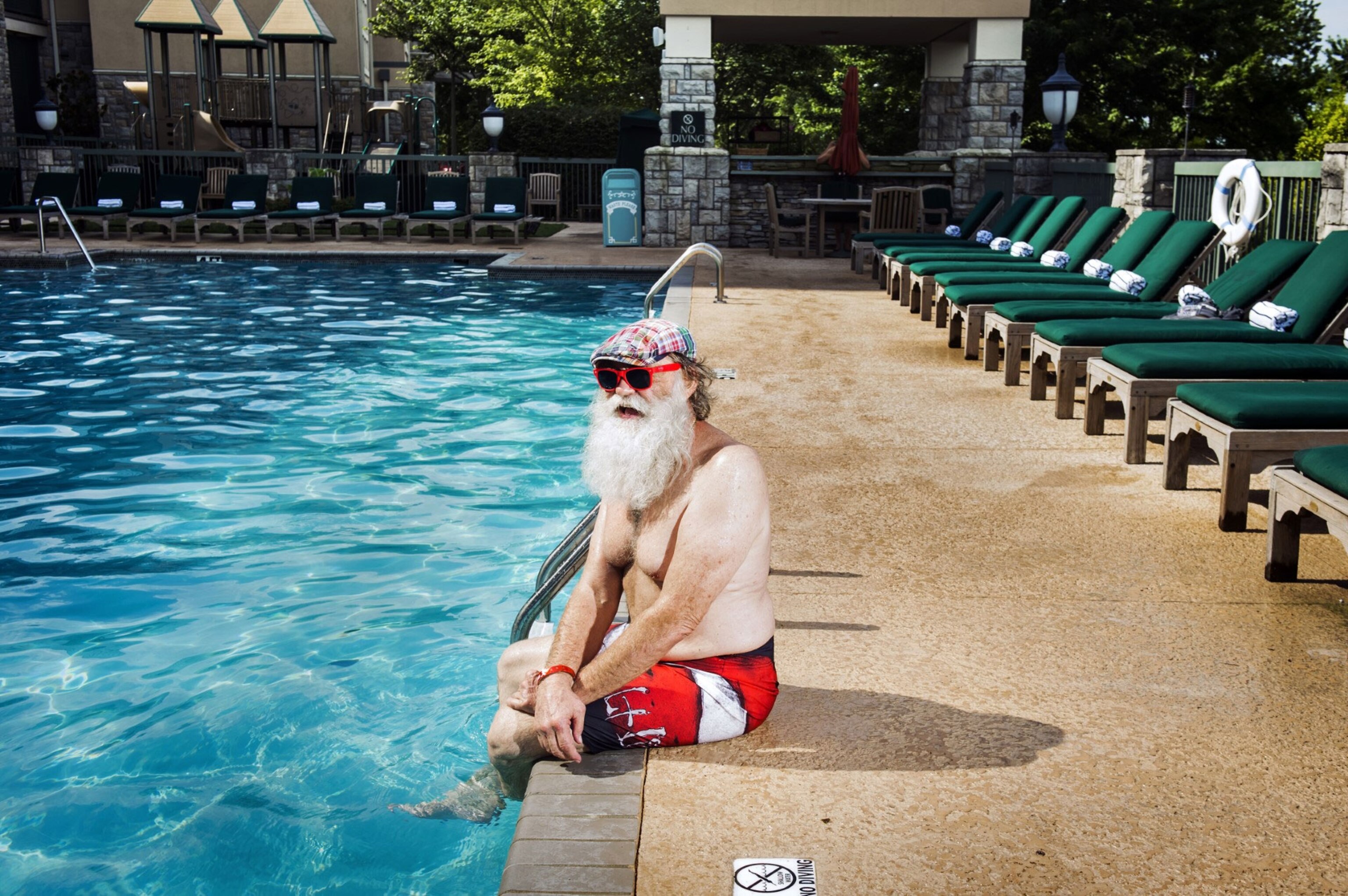
Dina Litovsky signs up for Santa summer camp
"When people think of National Geographic, they imagine epic landscapes, wildlife, and distant cultures. They probably don’t think of 750 professional Santa Claus impersonators gathered in the sweltering heat of Branson, Missouri.
Photographing this subculture was my first Nat Geo assignment and is still one of my favorites. In the first photo, Santa Steven cools off by the pool before a night of formals where all the Santas have to put on their professional winter garb... Being a professional Santa Claus requires both dedication and generosity. Many of the Santas I have met were retired professors or ex-veterans. All of them share a passion for their craft that gave me and readers a fascinating insight into a profession I didn’t know much about." —Dina Litovsky, @dina_litovsky
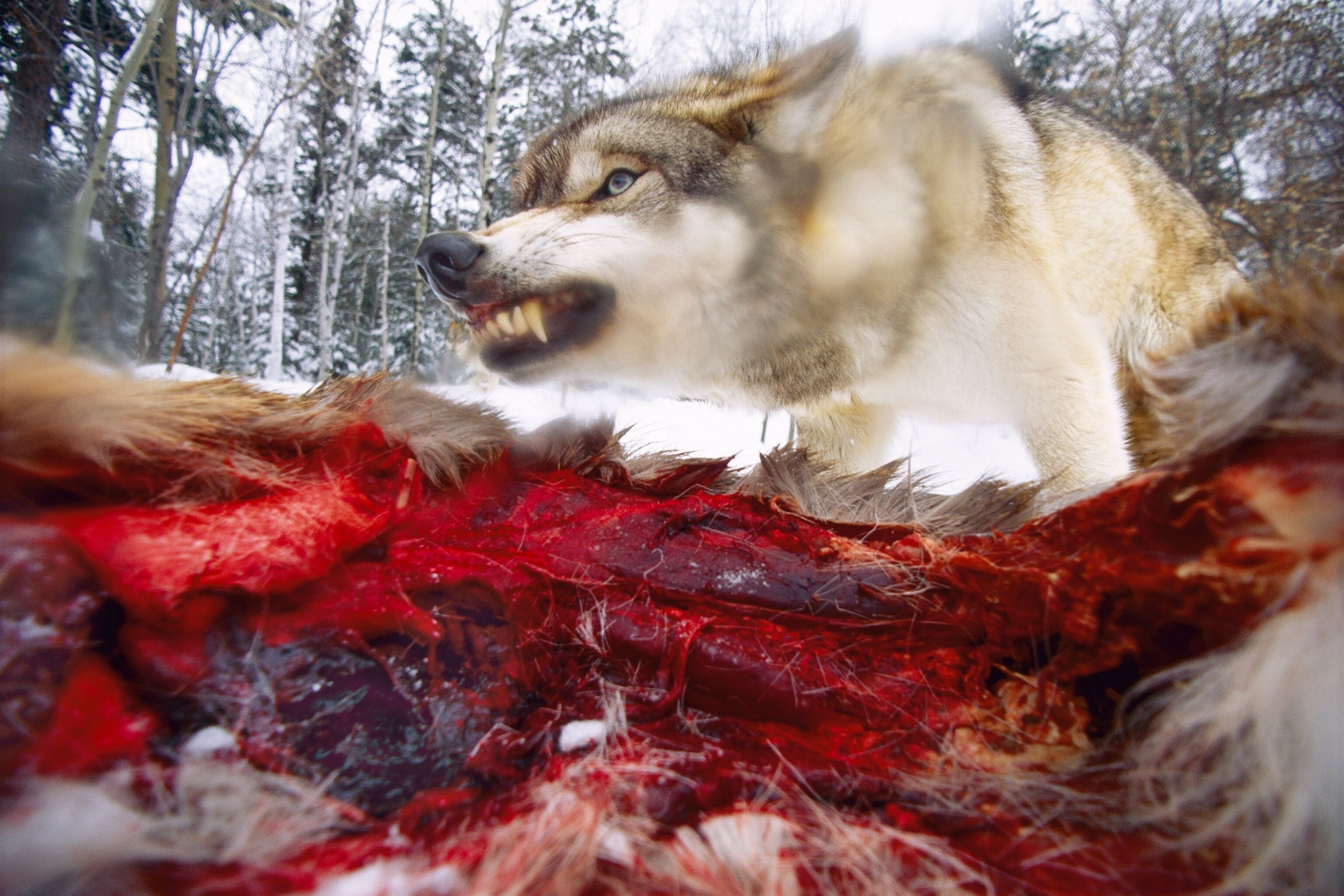
Joel Sartore dines with wolves
"The International Wolf Center in Ely, Minnesota, had a small 'study pack' of wolves in a large outdoor enclosure. Researchers could observe their behavior year-round, and tourists would stop by once in awhile to see if they could get a glimpse.
I asked what the wolves ate, and one of the biologists said the department of roads would bring road-killed deer up a couple times a week. They would throw the entire carcass in and then let the wolves tear it up and devour it just as they would in the wild. I thought this might make a good opportunity for a remotely operated camera. I called it "The Carcasscam."
This photo was made at the moment the alpha wolf, a female, was snarling at pack mates to stay away until she had eaten her fill.Joel Sartore, National Geographic photographer
I was up there for a week, which gave me two opportunities to embed a small, radio-triggered camera next to the carcass. The National Geographic Photo Engineering Lab created a heavy plexiglass sphere with a lens port, into which the camera was placed. The device was wide enough so a wolf couldn’t get his jaws around the thing and crush it. The first time I tried it, all I got were pictures of the wolves’ furry throats as they ate the deer from the back side of the camera. Two or three days later, when the second dead deer of the week was brought into the pen, I did things a bit differently; I moved the deer and camera to the opposite side, with lots of open plywood behind the camera. I figured the wolves would not want to walk on a hard, strange surface like that, and I was right.
This time, they approached to eat facing the camera, with their frosty paws never leaving the snow. This photo was made at the moment the alpha wolf, a female, was snarling at pack mates to stay away until she had eaten her fill. The little blurry area on her throat was where she had licked the lens port, trying to figure out what it was before tearing into her meal." —Joel Sartore, @joelsartore
(Joel Sartore has photographed more than 10,000 species. Learn why.)
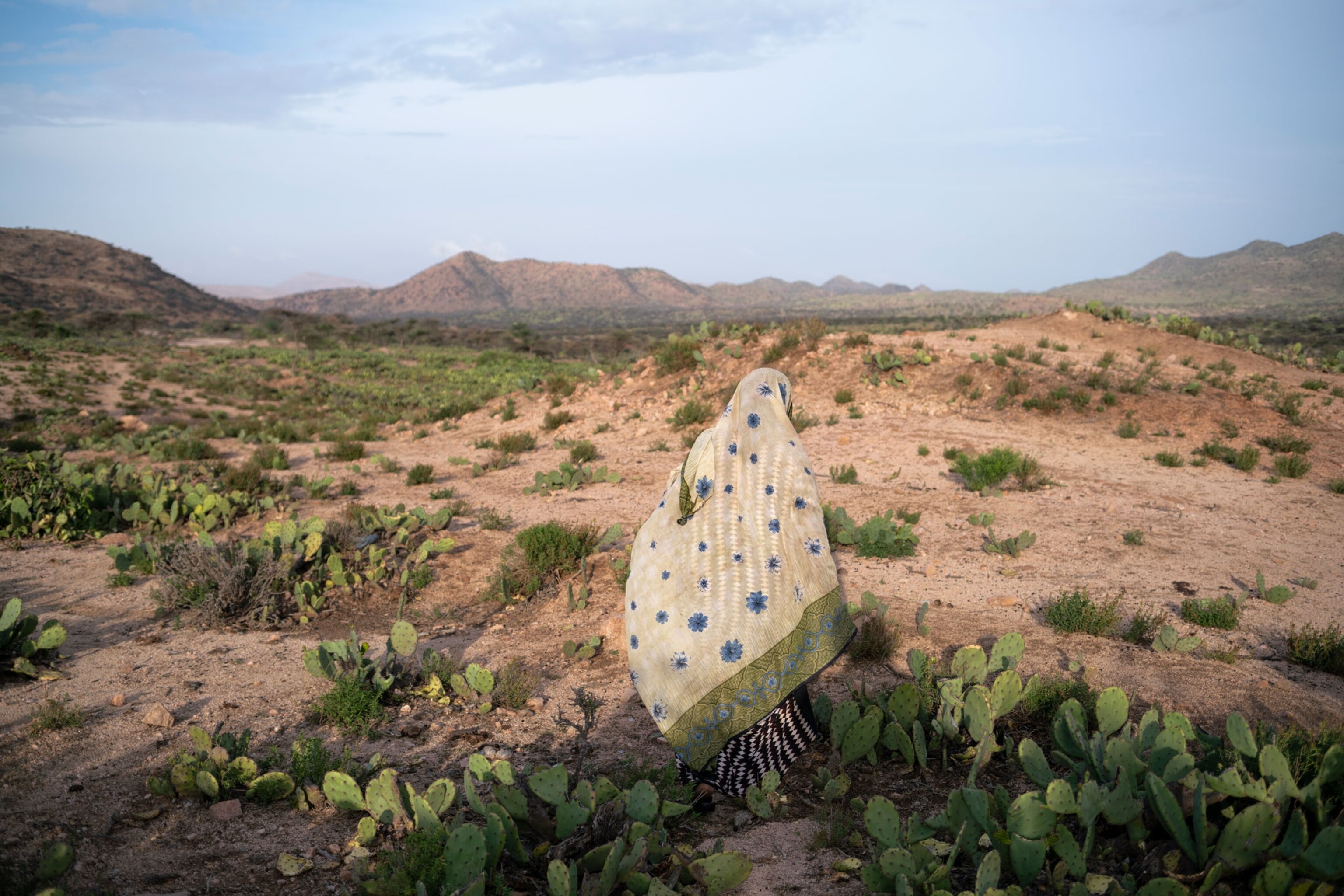
Nichole Sobecki exposes the consequences of disaster
"Driving through a drought-stricken area of western Somaliland, I came across a group of women washing their clothes in a roadside puddle—the only water they could find. We spoke for a while of the challenges they faced, the animals they’d lost in the drought, and the wells that had dried up.
Somalia has long been a place of extremes, but climate and environmental changes are compounding those problems and leading to the end of a way of life.
Stories can help guide our choices, and change us—sometimes radically.Nichole Sobecki, National Geographic photographer
As they turned to walk home, I took this image of one of the women in a field of cacti. The colors of her scarf melded into the vegetation and sky, and I was reminded of how intimate the ties are between people's lives and the land. What we call our voice is profoundly shaped by the stories we see, hear, and internalize every day. They’re how we give shape to the world beyond our own limited experiences. Stories can help guide our choices, and change us—sometimes radically. I hope images like these can reenforce our connection to the natural world, and break down the false pride in our separateness that enables harmful behaviors towards our shared planet and one another." —Nichole Sobecki, @nicholesobecki


